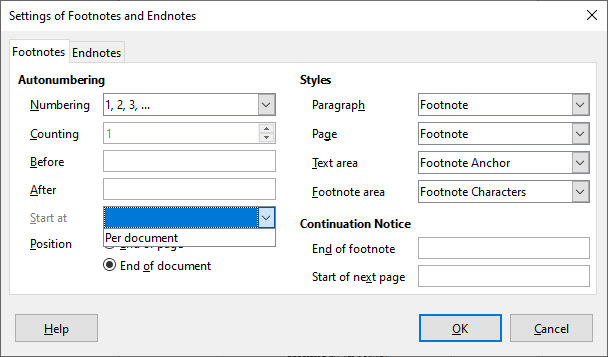Thank you, @ajlittoz for your quick reply.
No, I definitely don’t want endnotes at the end of each chapter/section, at least in the case of this book. Each chapter has upwards of 4-6 pages of notes. Readers who like the extra information provided in the notes won’t mind going to the end of the book to read them. But readers who don’t care much for such extra information will find 6 pages of notes an impediment to moving on to the next chapter. For such, the notes will become a barrier, “interrupting the flow” to the following chapter.
What’s really frustrating is that (as I mentioned in my initial posting) I have a long LOW document that works exactly as I want it to — footnotes (pretending to be endnotes) are assembled at the end of the ODM, with numbering restarting at the beginning of each chapter’s notes. I can’t duplicate that success in my current document either under LOW v.6.4.7.2 (my desktop) or here on my laptop (v.7.2.7.2), though both versions will open the successful document and leave it unchanged.
One problem might be that the “successful” ODM has an extra Text section after the sub-docs. I can’t add that section to the new document’s ODM. The ODM Navigator in v.6.4.7.2 will never give me an option to insert a Text section, because that option never appears in the Insert menu; there are only three options — Index / File / New Document. The ODM Navigator in 7.2.7.2 does show “Text” as a fourth choice in that menu group, but it is always grayed out; it’s never available. Does anyone have any idea about why each of these conditions would exist?
Once again, thanks for any help.

